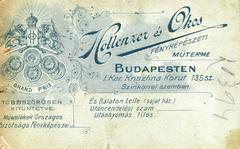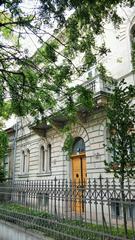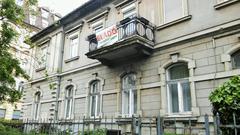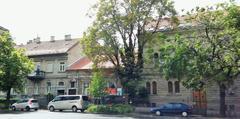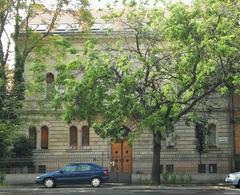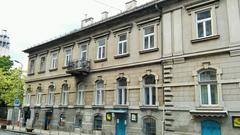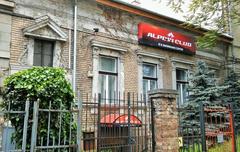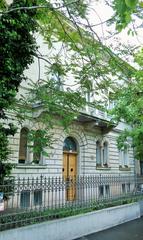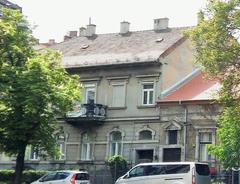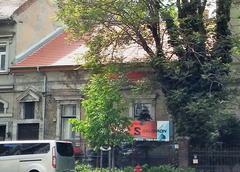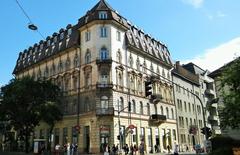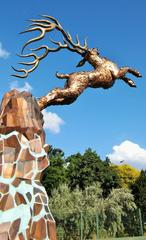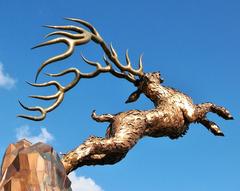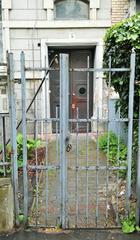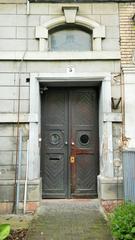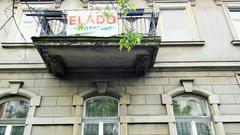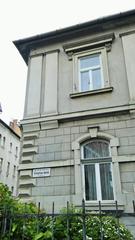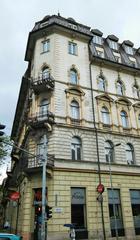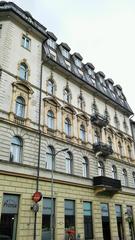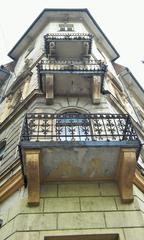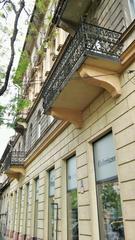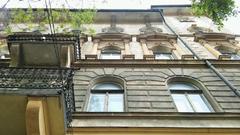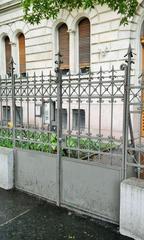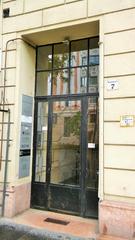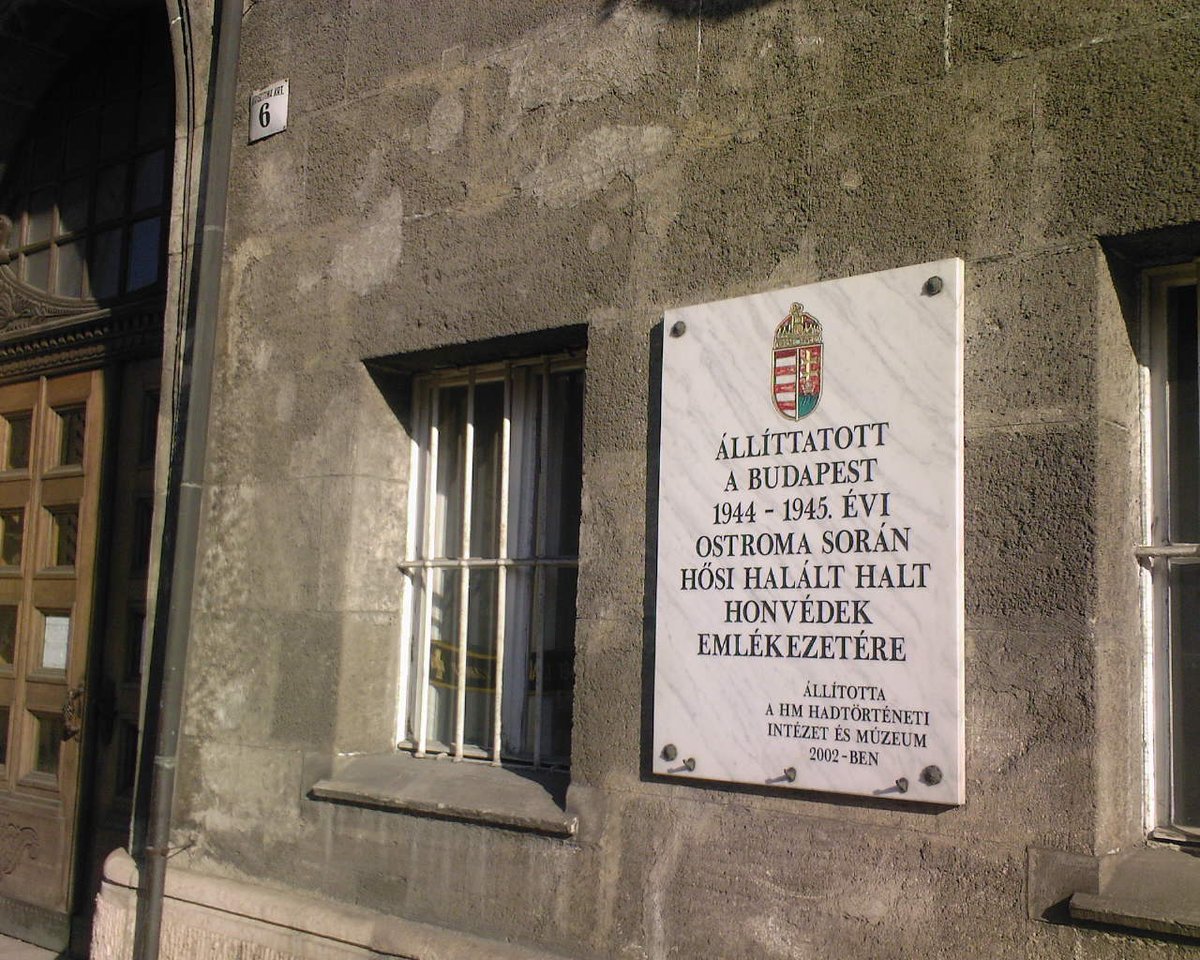
Krisztina Boulevard Budapest: Visiting Hours, Tickets, and Travel Guide
Date: 15/06/2025
Introduction
Krisztina Boulevard (Krisztina körút), nestled in Budapest’s historic Buda district, is an essential destination for travelers seeking a blend of history, architecture, and vibrant local culture. Named for Archduchess Maria Christina, the boulevard connects the Buda Castle District to dynamic residential and commercial areas, featuring a rich tapestry of neo-Renaissance, Baroque, and eclectic architectural styles developed during the city’s 19th-century expansion (Wikipedia: Krisztinaváros; Budapest History).
As visitors stroll along its tree-lined sidewalks, they can discover architectural gems, prominent cultural institutions like the National Museum and Institute of Theater History, and lively community spaces. Krisztina Boulevard is also a gateway to some of Budapest’s most celebrated areas, including the UNESCO-listed Buda Castle District, Gellért Hill, and Tabán Park. Whether you are interested in history, culture, or simply soaking up the atmosphere in a traditional café, Krisztina Boulevard offers a rewarding experience.
Table of Contents
- Historical Overview
- Architectural & Urban Highlights
- Cultural Institutions & Local Life
- Visiting Information
- Landmarks & Points of Interest
- Practical Travel Tips
- Accessibility & Transportation
- Nearby Attractions
- Seasonal Events & Local Festivities
- Frequently Asked Questions (FAQs)
- Summary & Resources
Historical Overview
Origins and Development
Krisztina Boulevard emerged in the late 18th century as part of Buda’s urban expansion under the Habsburgs. Named after Archduchess Maria Christina, its development was closely tied to Buda’s transformation into a prestigious residential district (Wikipedia: Krisztinaváros). The boulevard paralleled Castle Hill, positioning itself as a key access point between the historic core and the expanding city.
19th-Century Urbanization
Following the 1873 unification of Buda, Pest, and Óbuda, Krisztina Boulevard became integral to Budapest’s vision of a modern metropolis (History of Budapest). Urban planning at this time drew inspiration from Parisian boulevards, resulting in wide lanes, elegant residential blocks, and improved infrastructure.
20th Century and Modern Era
The boulevard witnessed both prosperity and hardship. It suffered during the 1944–1945 Siege of Budapest, but post-war restoration in the 1950s and 1960s helped preserve its architectural character. Today, Krisztina Boulevard is a thriving corridor reflecting Budapest’s layered history (Budapest Tourist Info: History).
Architectural & Urban Highlights
Krisztina Boulevard showcases a harmonious blend of historic and modern elements. Notable structures include:
- Áldásy Palace: Built in the 1840s, expanded in the 1930s, and currently home to the National Museum and Institute of Theater History and the Bajor Gizi Actors’ Museum (pestbuda.hu).
- Neo-Renaissance and Baroque facades: Ornate stonework, wrought-iron balconies, and Jugendstil details enrich the streetscape.
- Tree-lined sidewalks: Wide paths and mature plane trees create a pleasant urban environment.
Many buildings have been carefully restored, preserving Budapest’s 19th-century charm for future generations (Budapest History).
Cultural Institutions & Local Life
Museums and Theatres
- National Museum and Institute of Theater History / Bajor Gizi Actors’ Museum: Located in Áldásy Palace, these institutions chronicle Hungary’s theatrical and cultural legacy (pestbuda.hu).
- Tabán Cinema: Celebrated for art films and documentaries, reflecting the area’s vibrant artistic scene.
Community and Gastronomy
Traditional cafés, bakeries, and community markets reflect the enduring spirit of Budapest café culture. Local events and festivals further enrich the boulevard’s lively atmosphere (budapest.yourcityvisit.com).
Visiting Information
Hours and Tickets
- Krisztina Boulevard: Open to the public 24/7.
- Church of St. Mary Magdalene: Open weekends, 10:00 AM – 4:00 PM, free admission (Budapest Attractions).
- National Museum and Institute of Theater History: Tuesday–Sunday, 10:00 AM–6:00 PM. Tickets: ~1500 HUF, with discounts available.
- Tabán Cinema: See official site for screening times and ticket information.
Accessibility
The boulevard is generally accessible, with broad sidewalks and public transport options. Some historic buildings may have limited wheelchair access; check with venues in advance for details.
Landmarks & Points of Interest
- Church of St. Mary Magdalene: 13th-century origins, now a historic monument and exhibition space.
- Krisztina Square: Home to the Church of St. Elizabeth of Hungary and vibrant local life.
- Déli Railway Station: Major train terminal, fully accessible, linking Budapest to regional destinations.
- Tabán Park: Green space with panoramic city views, ideal for relaxation and events.
- Castle Hill Access: Stairways and streets connect the boulevard to the UNESCO-listed Buda Castle District.
Practical Travel Tips
- Best Time to Visit: May to September, when weather is pleasant and outdoor events abound (Budapestbylocals.com).
- Guided Tours: Walking tours often include Krisztina Boulevard and the Buda Castle District. Book in advance.
- Dining: Enjoy Hungarian specialties in traditional cafés and bakeries. Carry some cash in forints for small purchases.
- Safety: Budapest is safe, but stay alert for petty crime in crowded areas (Travelpander.com; JustBudapest.com).
- Etiquette: Greet locals politely, tip 10–15% in restaurants, and dress modestly when visiting religious sites (Passingthru.com).
Accessibility & Transportation
- Trams: Lines 56, 59, 61 run along the boulevard, connecting major hubs.
- Metro: M2 (red line) stops at Déli pályaudvar, just steps from Krisztina Boulevard.
- Buses & Bike Sharing: Multiple routes serve the area; BuBi bike-sharing stations are nearby (Budapestbylocals.com).
- Travel Cards: Offer unlimited public transport for visitors (triptobudapest.hu).
Nearby Attractions
- Buda Castle District: Royal Palace, Matthias Church, Fisherman’s Bastion, museums.
- Gellért Hill: Citadella fortress, Liberty Statue, Gellért Baths.
- Tabán Park: Scenic green space, ideal for relaxation.
- Széll Kálmán Square: Shopping, cafés, and public transport hub.
- Váci Street and Central Market Hall: Premier shopping and dining experiences.
Seasonal Events & Festivities
- Tabán Spring Festival: Annual event in Tabán Park with music and food stalls.
- Community Markets & Fairs: Regular events along the boulevard and in adjacent squares (Budapestbylocals.com).
Frequently Asked Questions (FAQs)
Q: Is there an entrance fee for Krisztina Boulevard?
A: No, the boulevard is a public street and free to access.
Q: What are the main visiting hours for attractions?
A: Most museums are open 10:00 AM–6:00 PM (closed Mondays); churches typically open 9:00 AM–5:00 or 6:00 PM.
Q: Is the boulevard accessible for wheelchair users?
A: Most areas are accessible, though some historic sites may present challenges.
Q: Are guided tours available?
A: Yes, many local agencies offer walking tours covering Krisztina Boulevard and neighboring districts.
Q: How can I get there?
A: Use trams, buses, or the M2 metro to reach the boulevard easily from anywhere in Budapest.
Summary
Krisztina Boulevard encapsulates the essence of Budapest’s rich historical and cultural heritage. Visitors can admire elegant facades, explore significant museums, and enjoy a taste of authentic local life. Its excellent accessibility, proximity to major attractions, and lively community events make it a must-see for every Budapest itinerary. Plan your visit in the warmer months for festivals and outdoor charm, and use public transport or guided tours for a seamless experience.
For more insights, download the Audiala app for interactive maps, guided tours, and the latest local updates.
Sources and Further Reading
- Krisztinaváros, 2023, Wikipedia (Wikipedia: Krisztinaváros)
- History of Budapest, 2023, Wikipedia (History of Budapest)
- Budapest.net: History, 2023 (Budapest.net: History)
- Budapest Tourist Info: History, 2023 (Budapest Tourist Info: History)
- National Museum and Institute of Theater History, 2021, PestBuda (pestbuda.hu)
- Budapestbylocals.com: Public Transport, 2023 (Budapestbylocals.com)
- Budapestbylocals.com: Visit Budapest in June, 2023 (Budapestbylocals.com)
- Budapest History, 2023 (Budapest History)

